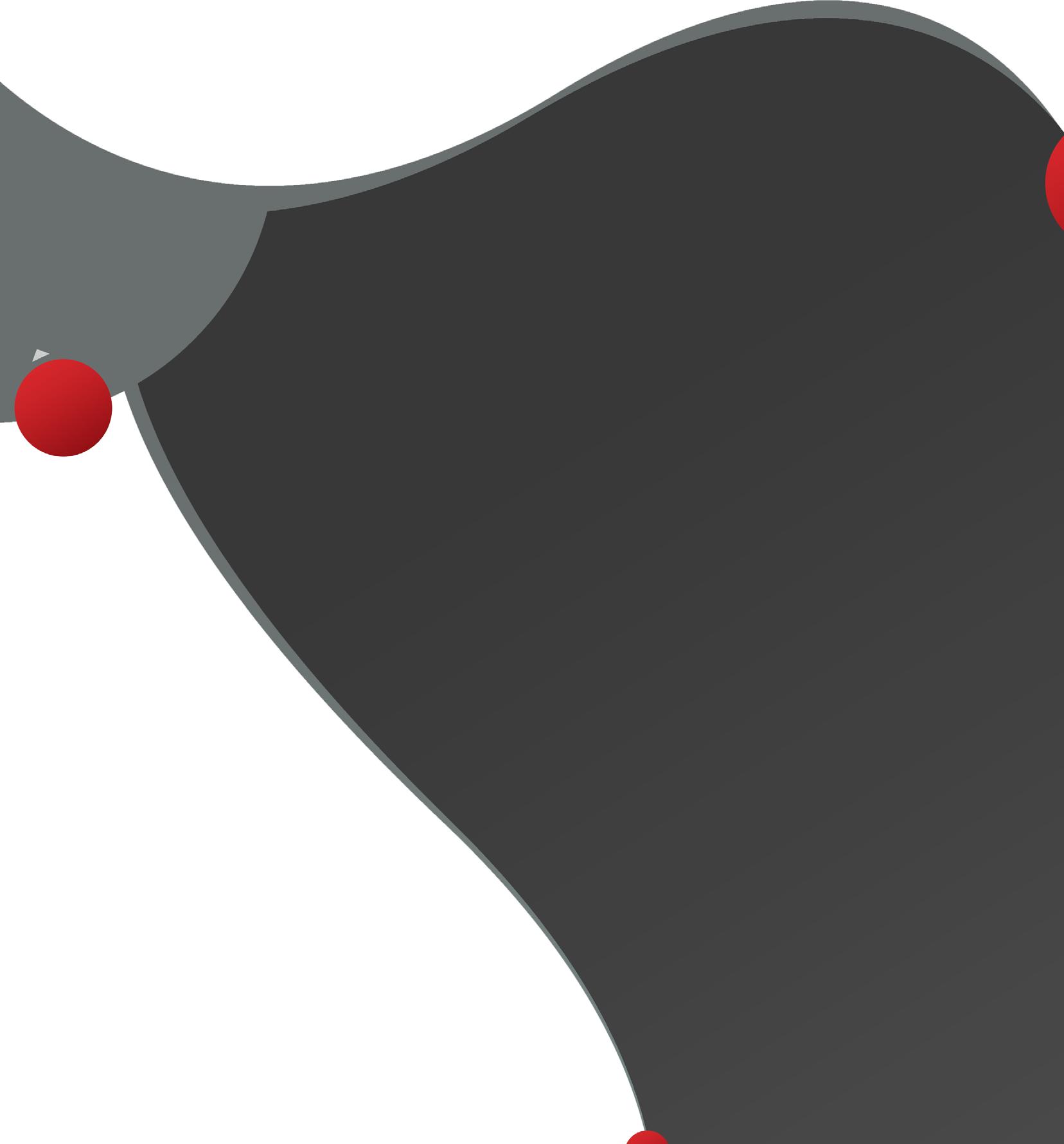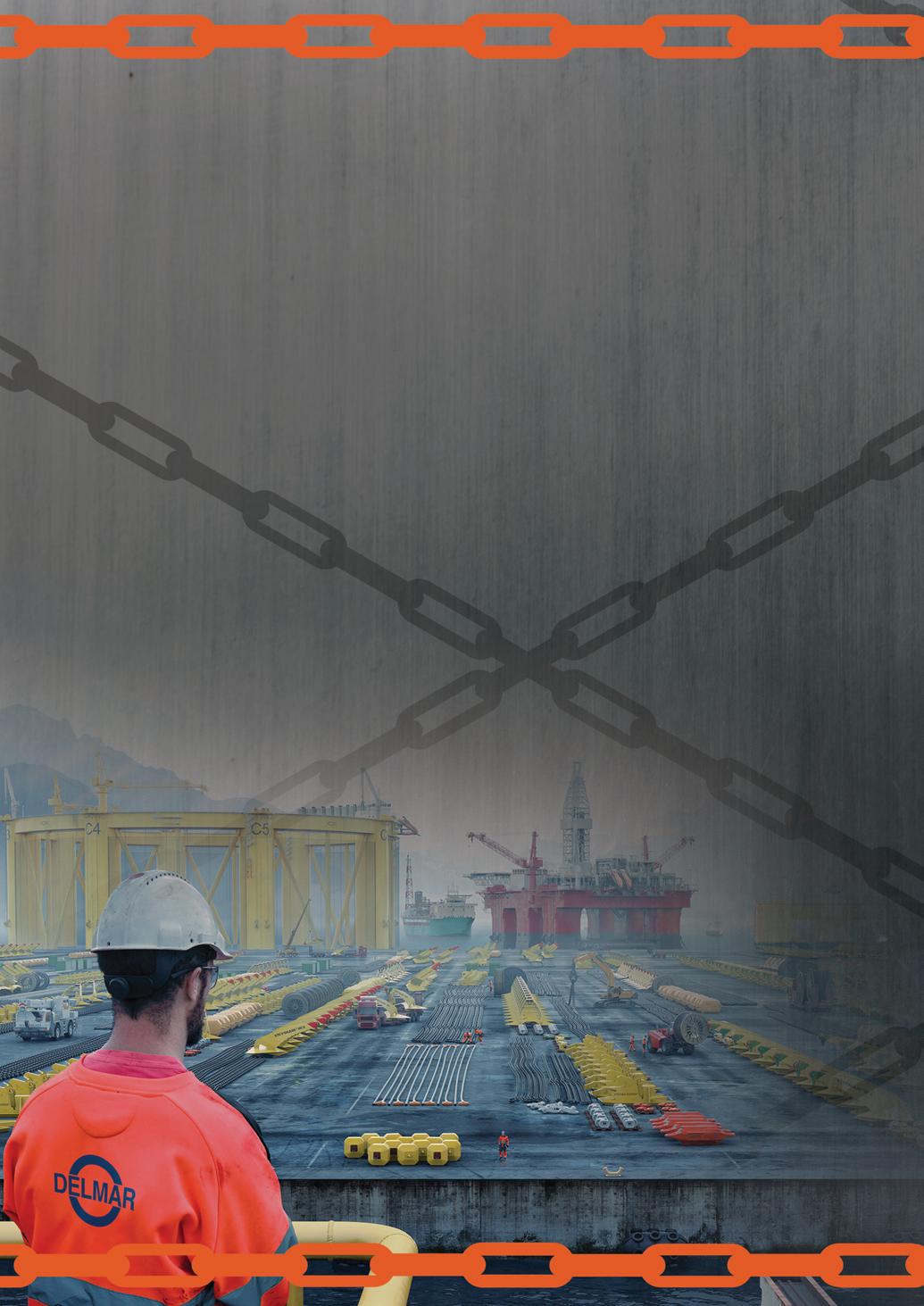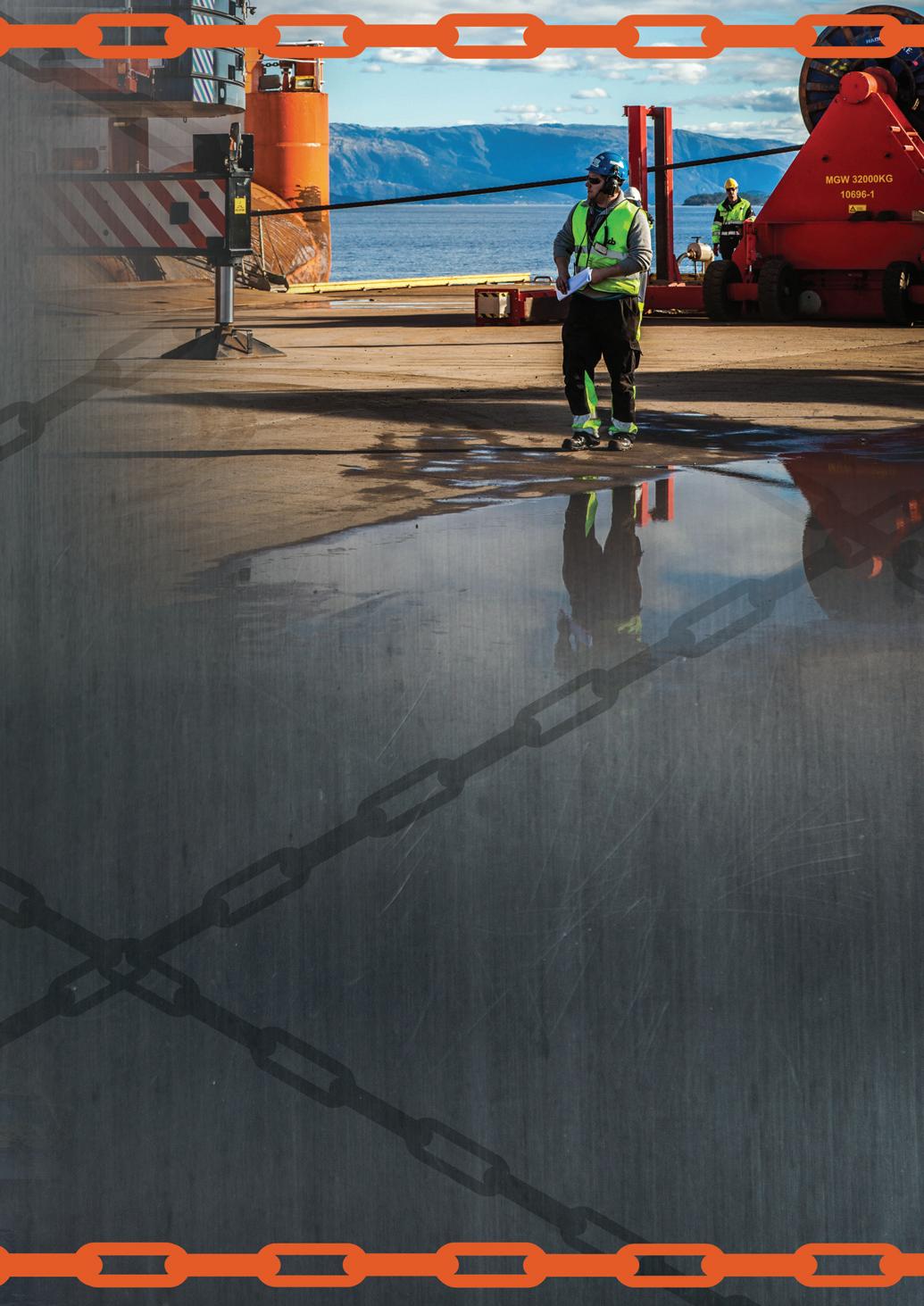


Offering complete foundation and mooring solutions to the energy industry, Delmar Systems is a global brand that has become a touchstone for clients looking to ensure their projects do not founder at sea. Now servicing the renewable energy sector and the rising trend for floating storage regasification units, the company is primed for significant growth in both sectors. Paul Crichton, Business Development Manager, sat down with Andy Probert to discuss the company’s work scope.
Established in 1968 to service the Gulf of Mexico region, Delmar Systems has since become a mainstay in designing, manufacturing, supplying and installing anchor and mooring solutions.
It has expanded to the world's leading oil and gas hubs, such as the UK, Singapore, Australia, Norway and Brazil. It recently purchased Deep Sea Mooring and Vryhof Anchors and rebranded them as Delmar

Systems to give the group a solid European fo othold. This was initially to serve the traditional energy and, more recently, the renewable energy sectors, particularly floating wind.
Now the world's largest foundation and mooring solutions company, employing 160 people, it has provided anchors, moorings and installation services on around 80% of the installed floating wind projects globally, explained Paul Crichton, Business Development Manager.
Technology advances Delmar Systems has deployed 807 mooring line releases with its patented RAR Plus technology. This is an acoustic mooring line release system enhanced with increased robustness and reliability
to operate in the world's harshest environments. A vital feature of the RAR Plus is the independent mechanical backup release function the rig can actuate without ROV or anchor handling tug supply vessel support for ultimate reliability.
“The RAR Plus is proving to be an effective cost and emission saving, risk-mitigation tool for our customers,” said Mr Crichton. “We ensure clients receive the full benefit of releasable mooring systems by providing the most reliable solutions on the market.”
The RAR Plus improves rig-move efficiency, reduces emissions and facilitates a MODU’s ice and hurricane avoidance strategy. This technology and industry-leading mooring philosophy is resulting in significant cost savings and carbon emission reductions.

Continuing to strengthen
In 2022, Delmar and CAN Systems were jointly awarded the design and supply of a mooring system for the INGS LNG Alexandroupolis (FRSU). The mooring chains, anchors and restrictors have been successfully delivered at Alexandroupolis Port. Delmar will act as the project’s installation provider too.


INGS LNG Alexandroupolis is a significant energy project, with high importance for Greece, Bulgaria and the broader region since it contributes to the diversification of
energy sources and routes for Southeast Europe. It also enhances energy security and competition in the region and supports the creation of a regional natural gas hub.
“The project is strategically located at the crossroads of the Southern and Vertical Gas Corridor,” Mr Crichton continued, “and offers access to liquified natural gas to the markets of Greece, Bulgaria, Serbia, Romania, Northern Macedonia and further away in Northeast Europe.”
In addition, Delmar has just delivered anchors for an LNG project in Mexico and will conduct the mooring pre-lay operations in the coming months. “LNG has become critical to Northern Europe's energy security,” he said. “Delmar is proud to contribute to providing cost-efficient solutions for LNG export and import. ”
The rapid rise of offshore renewables has called for new solutions, and Delmar has seized the opportunity to introduce two innovations on the TetraSpar Demonstrator
project: the Stevadjuster and the Deltracker tracking system.
The TetraSpar project is a floating wind turbine foundation and is the world's first full-scale demonstration of an industrialised offshore foundation. It is carried out in a partnership between Shell, RWE, TEPCO Renewable Power and Stiesdal Offshore Technologies. The foundation is a tetrahedral structure assembled from tubular steel components. It is expected to offer significant competitive advantages with its potential for lean manufacturing, lean
assembly and installation processes, and low material costs.
The Stevadjuster is an innovative, costeffective and time-saving solution for chain adjustment, pre-tensioning of moorings and easy connection or disconnection of anchor lines. The Stevadjuster removes the requirement for high bollard pull by utilising the force multiplier of a vertical pull.

The entire operation takes place subsea and does not require winches or other heavy equipment on the moored platform. Therefore, the bollard pull of each vessel

involved in the operation does not need to be prohibitively high.
“Modest installation or maintenance vessels have sufficient capacity to get the job done,” Mr Crichton said. “The use of this subsea chain adjuster offers significant safety benefits, as the tensioning operation is performed away from the floater.”

Deltracker is software used to track the lifecycle and usage of mooring equipment. The TetraSpar Demonstrator takes about 115 components to be moored. Looking ahead at a farm-scale level, it might be dealing with over 6,000 mooring components per wind farm. A digital tracking system, such as Deltracker, will be indispensable, as it is a standalone software package with userspecific dashboards, a GUI interface, and easy to navigate framework for tracking all components of a mooring system.
Delmar has continued to develop bespoke products for the industry, recently furthering its Stevtensioner, a force multiplier used for high tension installation work, particularly attractive to windfarm installation and its Stevpris Mk-7 anchor, which is being field tested in the North Sea, and multiple fit-forpurpose floating wind anchors. Mark 7 is the latest anchor design, superseding the Mark 6, which has been the industry benchmark for over 20 years.
“We are also developing our mooring line monitoring software and establishing a planned and unplanned regime for floating wind farm mooring line maintenance,”
Mr Crichton added. “One of the benefits of being the world's largest foundation and mooring provider has been the seamless evolution of our business to service the renewable energy sector.”
Meeting global demand
“Being a truly global organisation, we have been approached by key operators and Tier 1 contractors to assist with the design, manufacture and installation of our anchor product range and life of field

maintenance of the whole mooring line,” Mr Crichton continued. “This is due to our years of experience working subsea with floating structures, managing integrity of the mooring lines.

“The huge global demand for capacity has seen us engage in an extensive expansion of our international manufacturing bases, capitalising on our rich history of manufacturing anchors worldwide for the oil and gas sector. This will further strengthen our market-leading position as the primary anchor OEM and mooring services provider for the energy sector.
“As the energy sector grows in size and scale, we are well placed to deal with this evolution through our scalable products and services. This will allow us to serve a significant role in the energy expansion process and assist in standardising the floating wind industry, allowing for a reduced cost of energy.
“Delmar takes the environment extremely seriously: all our processes are vetted to ensure maximum environmental benefit,
and many of our product lines reduce the overall CO2 emissions on projects.”
Mr Crichton concluded by highlighting how Delmar are committed to a healthy relationship with both clients and suppliers; built on the foundations of integrity and trust, and its reputation for excellence, which “we constantly monitor as part of our continuous improvement programme.” n

